Today’s featured spiders for Spider Week are the fishing spiders (also known as raft spiders) in the genus Dolomedes. I suspect the reason they are so often mistaken for brown recluse spiders is that they are (a) brown, and (b) often very large. Brown recluse spiders aren’t particularly large, but folks seem to (erroneously) associate size with danger when it comes to spiders.
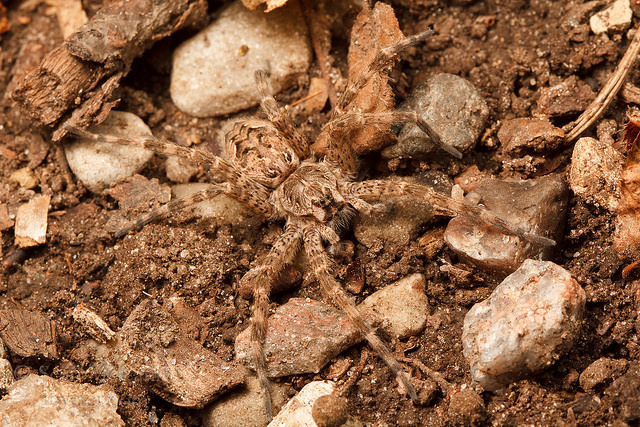
A large female Dolomedes tenebrosus from southern Ontario. Photo: Sean McCann, used with permission.
Fishing spiders are members of the family Pisauridae, commonly known as nursery web spiders. Female spiders in this family make excellent mothers. They carry their large silken egg sacs around in their chelicerae (jaws) until the spiderlings inside are just about ready to emerge. Presumably this means that females don’t eat at all during this time!
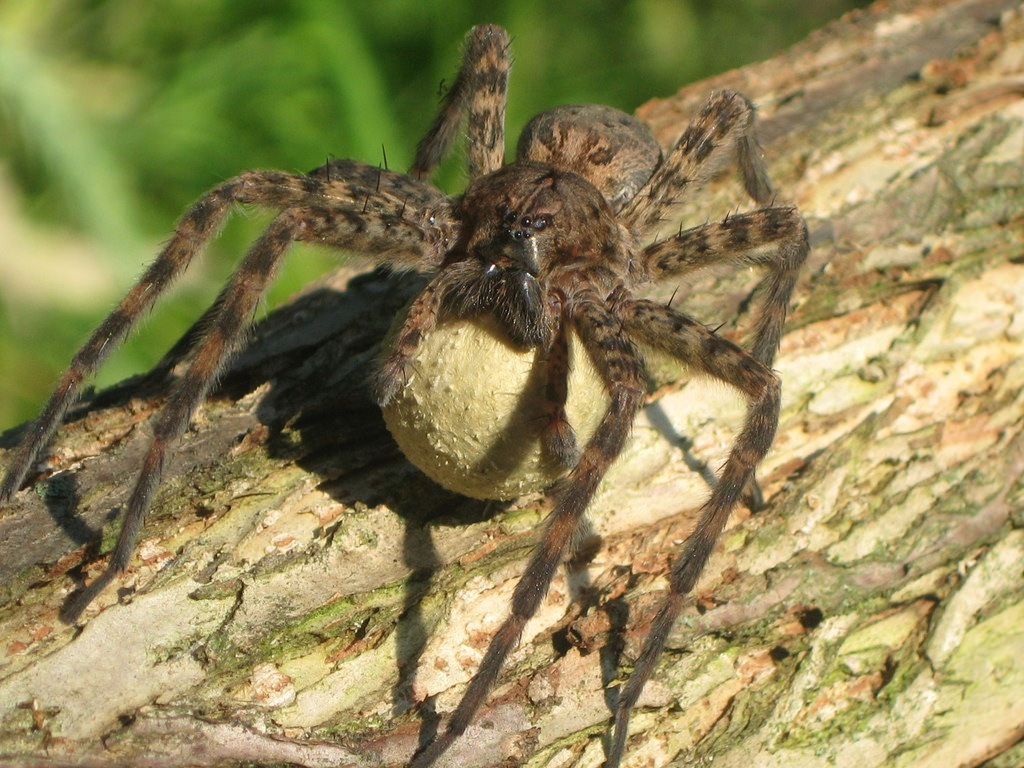
Dolomedes female carrying her egg sac in her jaws. Photo: Ron Knopik, licensed under CC BY 2.0.
The spider then builds a nursery web in vegetation and suspends the egg sac inside. She stands guard until the spiderlings emerge. They remain in the nursery web for a while, undergoing one moult before setting out on their own.
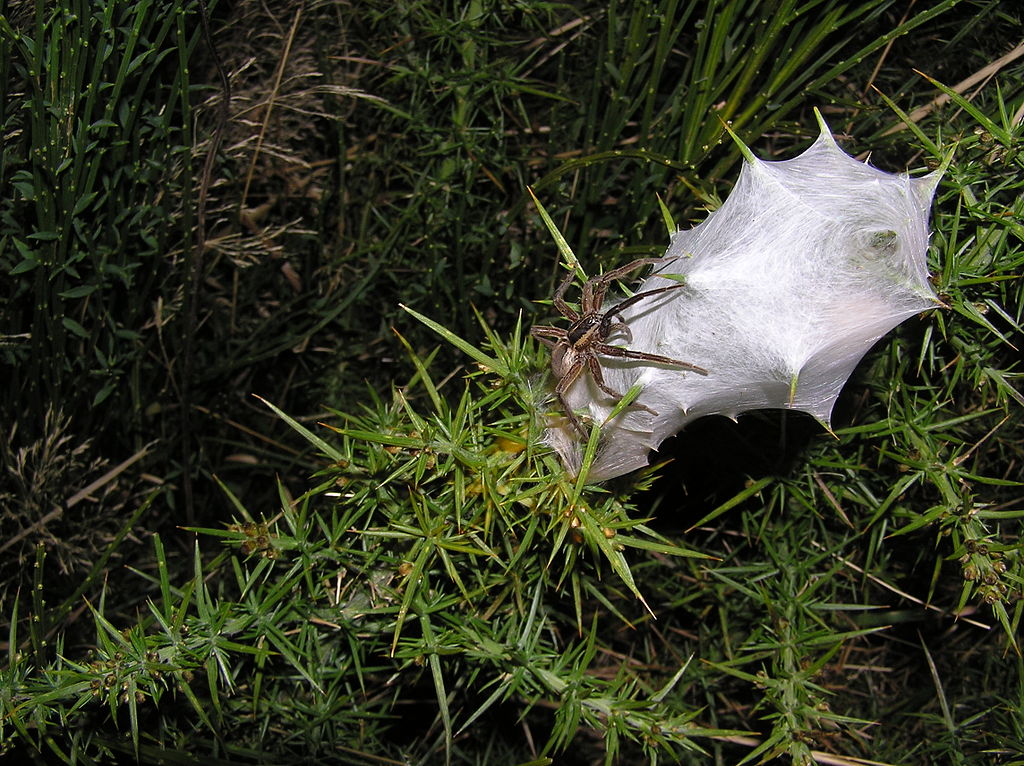
Nursery web spider guarding her nursery in New Zealand. Photo: Tony Wills, licensed under CC BY 3.0.
The large fishing spiders, including Dolomedes tenebrosus and Dolomedes scriptus are also sometimes called dock spiders or wharf spiders. They are typically found on or near water – often on human-made structures.
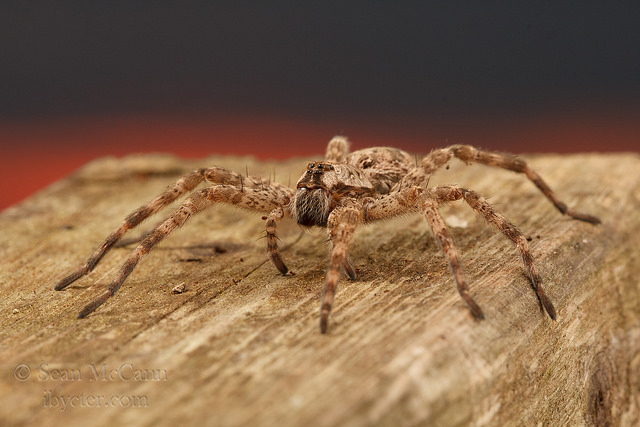
Dock spider (Dolomedes tenebrosus) on part of a wooden wharf in Ontario. Photo: Sean McCann, used with permission.
As their common name suggests, fishing spiders make a living hunting for fish, tadpoles, and aquatic invertebrates. They can walk on water and even sail across the water’s surface either by lifting their front legs, or by standing up on ‘tip-toe’ to catch the wind.
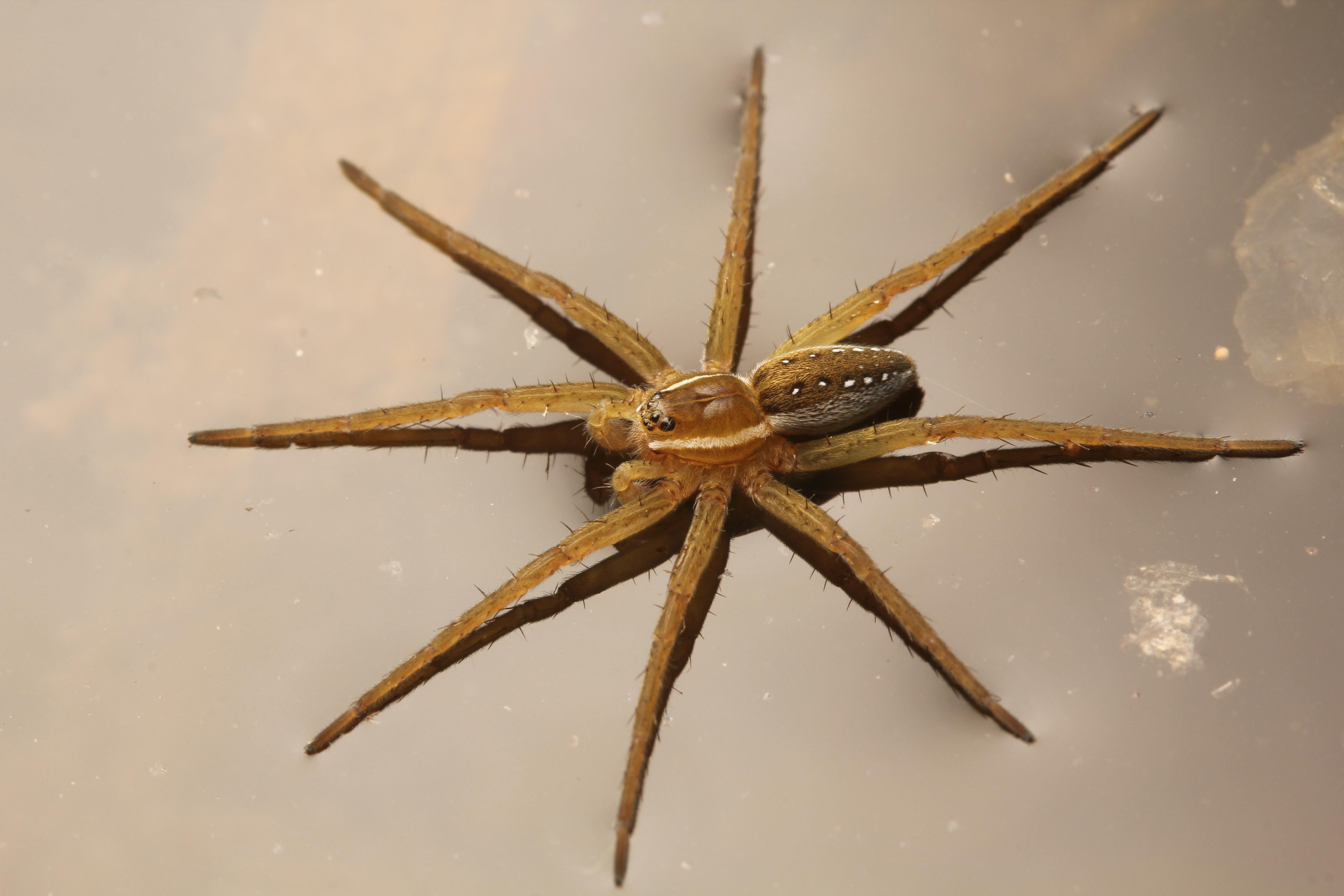
Six-spotted fishing spider (Dolomedes triton)resting on the surface of a pond in the Okanagan. Photo: Sean McCann, used with permission.
While hunting, fishing spiders typically rest with their back legs on floating wood or vegetation, and their front legs resting lightly on the water’s surface. This way they can detect surface waves on the water, allowing them to locate potential prey. If the spider detects a fish under the water, they use their back legs to push off and dive after it. Dolomedes triton also dives under water when disturbed – this may be a good way to avoid predators such as birds (or a scary human trying to catch them, which is how I first observed this behaviour). And they can stay under water for up to half an hour! They are able to breathe underwater because spider lungs are located on the abdomen, which is covered with fine hairs that trap air, forming a sort of diving bell.
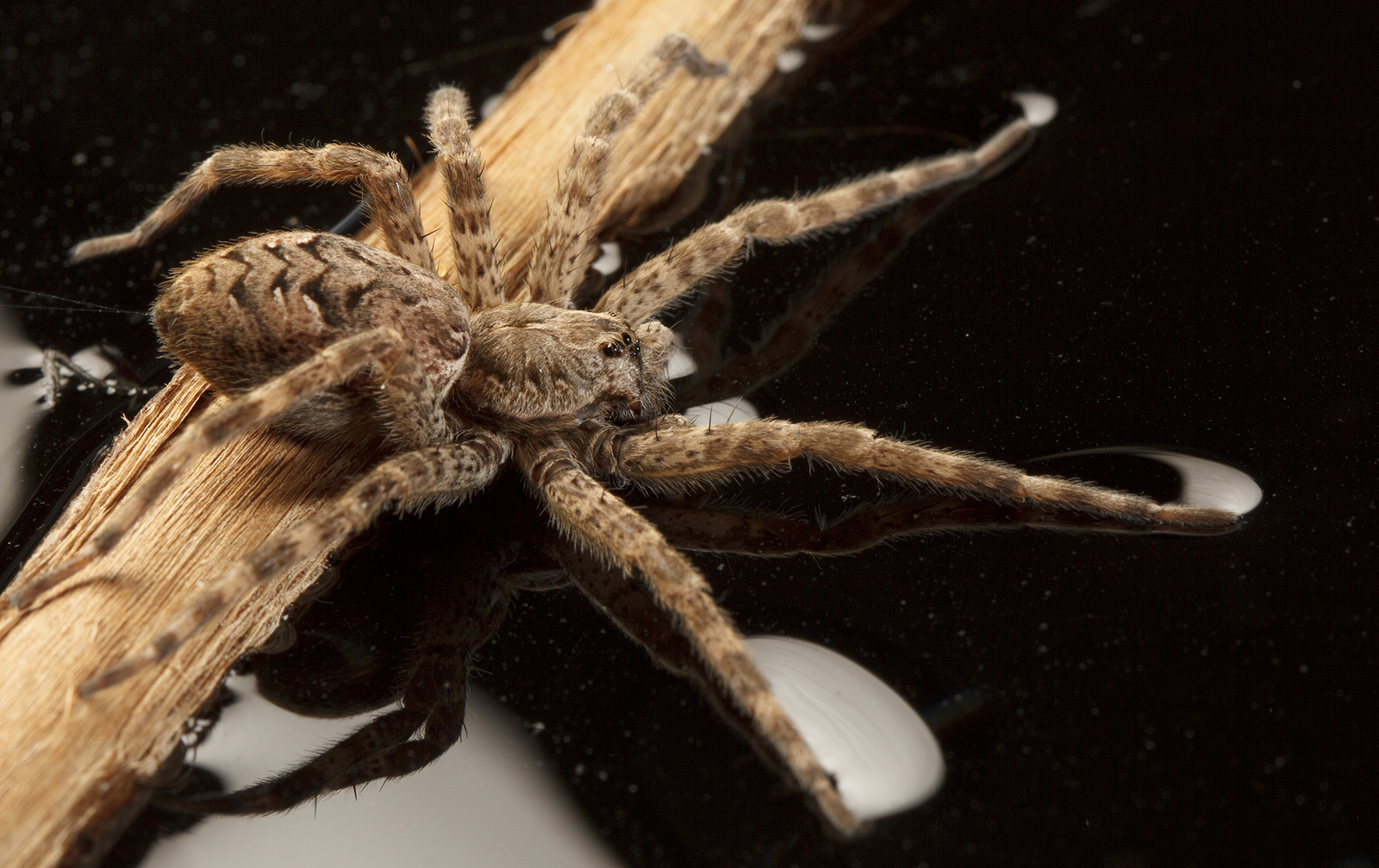
Fishing spider (Dolomedes tenebrosus) in hunting position on the water’s surface. Photo: Sean McCann, used with permission.
Notes on Identification
Fishing spiders are most likely to be confused with wolf spiders (family Lycosidae). The best way to tell them apart is the eye arrangement. Wolf spiders have three rows of eyes, with the forward-facing pair in the middle row (the posterior median eyes) very large, and the first row of four eyes in a straight line or slightly procurved (curved downwards).
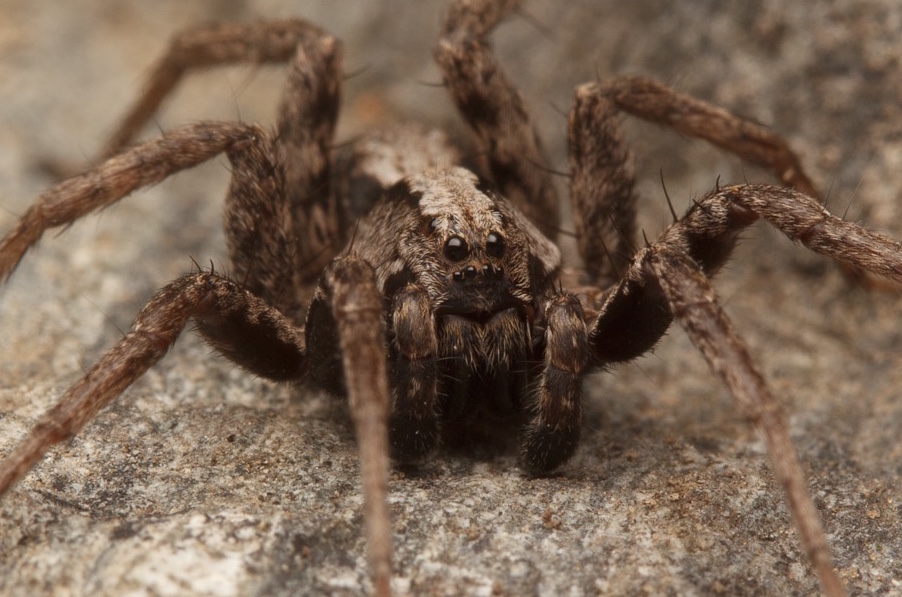
Wolf spider eye arrangement. Photo: Sean McCann, used with permission.
Fishing spiders have only two rows of four eyes each. Both rows are slightly recurved (curving upwards or toward the back end of the spider) and the posterior median eyes are not that much larger than the rest.
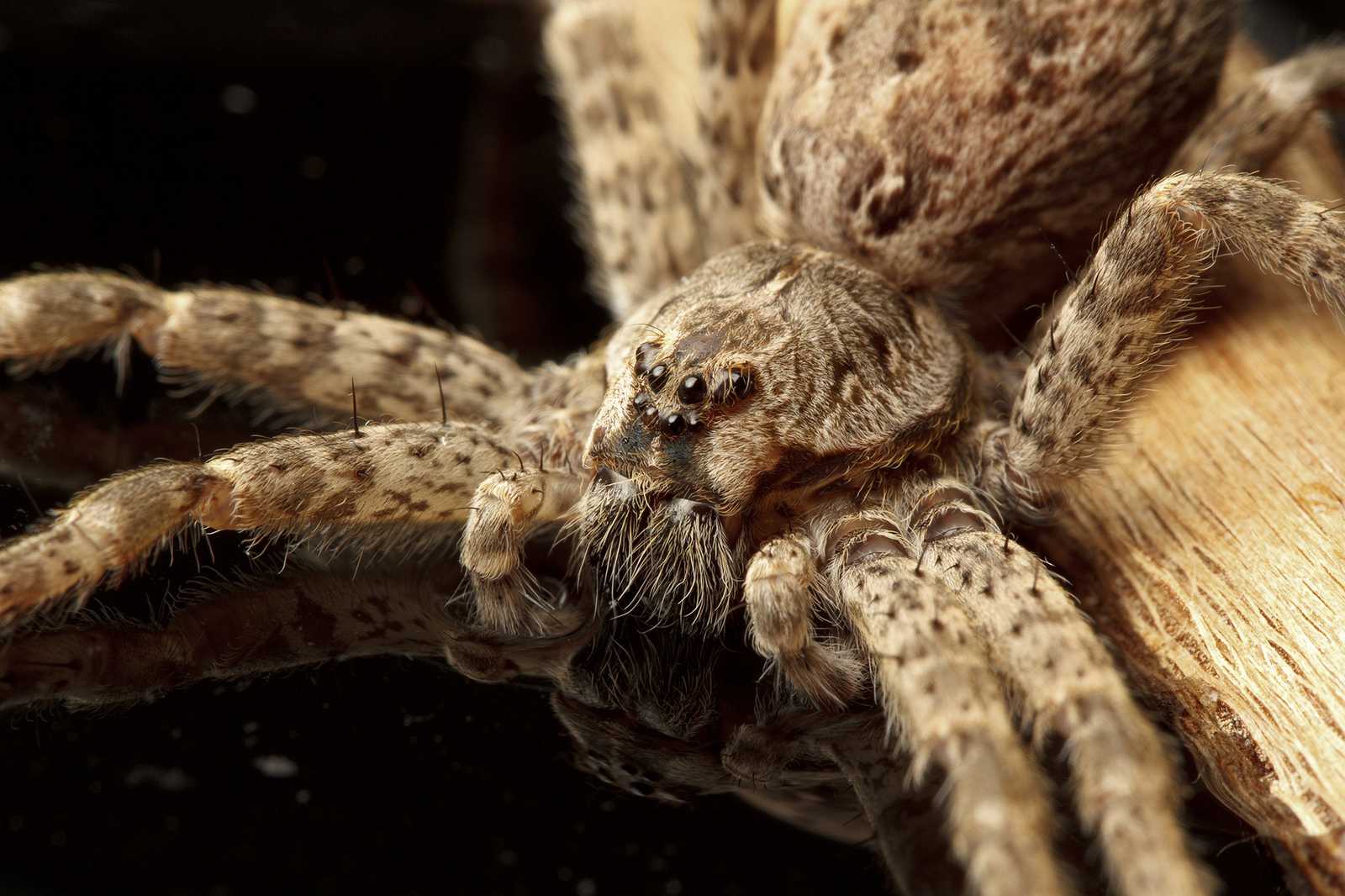
Fishing spider eye arrangement. Photo: Sean McCann, used with permission.
References and further reading:
A dedicated mother (with fantastic photos!) by Alex Hyde
Canada’s largest spider by Chris Buddle
Pisauridae: Nursery web spiders by Africa Gomez
Adams, R. J. (2014). Field Guide to the Spiders of California and the Pacific Coast States (Vol. 108). University of California Press.
Bradley, R. A. (2012). Common Spiders of North America. University of California Press.
Carico, J. E. (1973). The Nearctic species of the genus Dolomedes (Araneae: Pisauridae). Bulletin of The Museum of Comparative Zoology, 144:435-488.
McAlister, W. H. (1960). The diving and surface-walking behaviour of Dolomedes triton sexpunctatus (Araneida: Pisauridae). Animal Behaviour,8(1-2), 109-111.
Nyffeler, M., & Pusey, B. J. (2014). Fish predation by semi-aquatic spiders: a global pattern. PLOS ONE, 9(6), e99459.
Suter, R. B. (1999). Cheap transport for fishing spiders (Araneae, Pisauridae): The physics of sailing on the water surface. Journal of Arachnology, 27:489-496.
